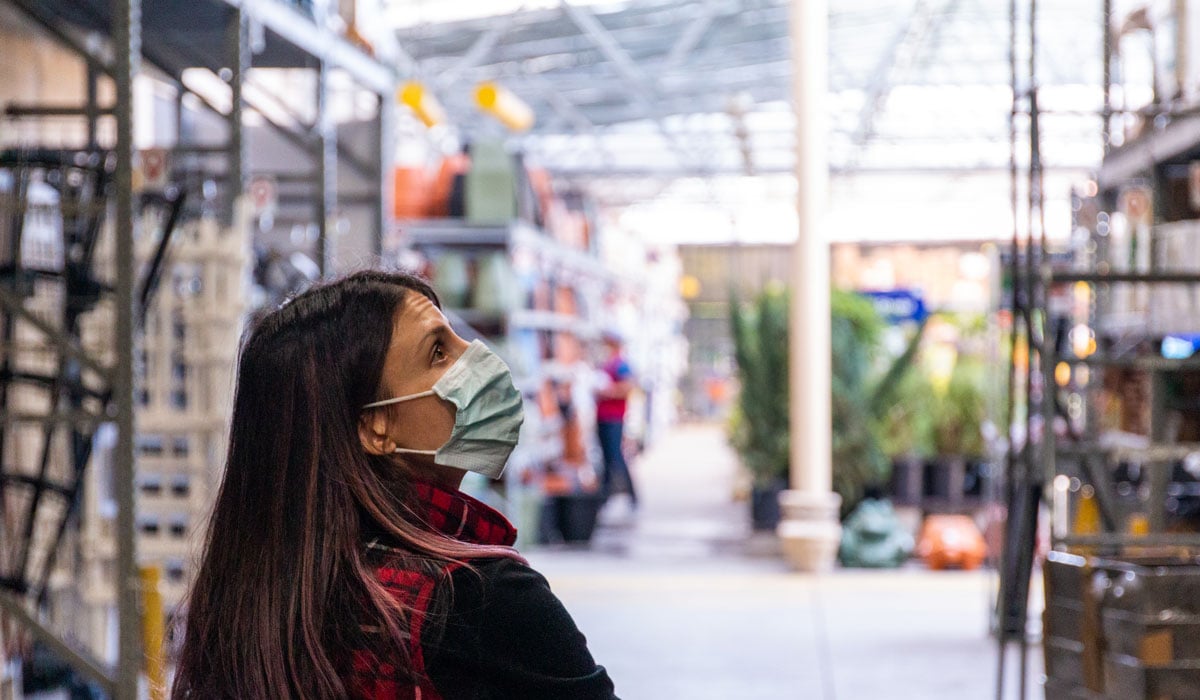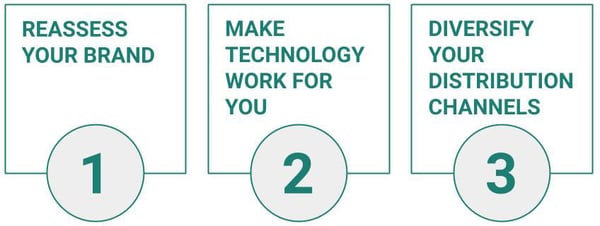
The old adage “Change is the Only Constant” hardly seems to capture the rate of change that has impacted consumers and brands since the onset of the COVID-19 pandemic. The rules of retail are in a state of flux as consumers learn to navigate new social behavior requirements, working from home or job loss, financial uncertainty and home-schooling children. How does a brand ensure that they will not just survive but thrive?

Consumers have significantly reduced spending on services and durable goods, while driving the largest ever quarterly surge of consumer spending on at-home food and beverages, according to the Bureau of Economic Analysis. Consumers are adhering to social distancing recommendations by harnessing online retailers to purchase products essential to maintaining their day-to-day lives. More people are shopping, buying and ordering online for home delivery or store pick-up than ever before. According to Engine Insights, online shopping has increased 74% since March 13th.
Since digital shopping was already on the rise before the pandemic hit, the dramatic shift in shopping behavior from brick and mortar to digital will likely continue as more consumers realize the convenience and become familiar with the experience. New digitally engaged, “always-on” consumers bring a different set of expectations as well as new opportunities for brands. Meanwhile brands and retailers are struggling with store closures, employee safety, labor force issues, disruption in the supply chain, reduced cash flow and fluctuations in consumer demand.
Many brands were caught off guard and put into the position of being reactive instead of proactive. Consumer brand preferences have eroded as 85% of consumers surveyed feel that brand names do not matter in this era of chain stores. Consumers are turning to any brand that can supply paper goods, cleaning supplies, rice, canned goods and other family necessities. CPG companies are losing control of the brand/product experience.
How does a brand stay relevant in today’s environment?
85% of consumers surveyed feel that brand names do not matter in this era of chain stores.
Brand Reassessment
It is always a worthwhile exercise to complete an analysis of your brand to understand where and how you fit into the marketplace. With unprecedented change taking place in that marketplace, here are some questions to consider when conducting your brand analysis:
- Have recent market forces affected how your brand and products are valued? If so, is this a short-term effect that may correct itself? Or is it expected to have long-term impact, suggesting a fresh positioning strategy?
- Have competitors changed their messaging, assortments, pricing or distribution recently?
- Looking forward, what is your competitive advantage or point of difference?
- Are end users of your products expected to stay the same in the foreseeable future? Or are they changing in relative sales potential?
- What are the market conditions expected to be? Are there new growth opportunities, such as new audiences, channels, or products that you could explore?
Taking a deep dive into these questions and analyzing the answers are essential to creating a successful digital marketing strategy.
Make Technology Work for You
Invest in a content management system (CMS). Your brand message should be consistent, and you should create relevant content across all platforms from digital to brick and mortar. A powerful CMS, such as HubSpot, makes it simple to create, manage and distribute the educational, engaging content on your website.
Strengthen your online presence on search engines. Research the keywords that are relevant to your brand and audience and use them in the content you create. Embed those keywords in your content to achieve a higher Google ranking and increase website traffic.
Optimize your website for mobile. According to Pew Research, 81% of Americans own a smart phone and 53% of web traffic comes through mobile phones (Statcounter), so make sure your website looks as good on their mobile device as it does on their desktop computer.

Use social listening software to find out who is mentioning your brand on social media and what they are saying, then reply if necessary.
Build more authentic brand awareness by researching and reaching out to industry influencers for sponsored partnerships. Leverage partnerships by promoting sponsored content on your blog and social outlets.
Personalize customer experiences and create a sense of community by capturing data to learn how, why and where your customers do business with you. There are a variety of customer data software platforms available to help brands collect customer data.
Make sure your customer service is friendly and proactive. Monitor social media, product review sites and community forums for opportunities to help your audience or correct a problem/misconception about your brand.
Diversify Your Distribution Channels
The current pandemic has proved that retailers must move beyond a brick and mortar mentality. With social distancing and contactless shopping the norm, all stores and restaurants that have remained open are providing alternative shopping experiences, like online ordering and curbside pickup. How can your brand offer consumers access to more purchase options? Consider enhancing your retail website, marketplaces and direct-to-consumer sales, to respond to shifts in consumer behavior and reduce the need for physical interaction in stores.
Gain more control over your inventory and pricing and beef up your e-commerce capabilities by adding a “where to buy button” as well as “near real time” inventory data on your website.
This enables customers to find what they need, when they need it, whether it is online or in your store. Strengthen your company’s ability to anticipate demand and optimize inventory management by leveraging consumer shopping behavior and search data.
How Can We Help?
The current pandemic has prompted rapid changes. But unforeseen events and advances in technology will continue to drive how consumers interact with brands. Heinzeroth Marketing Group can work with your company to strengthen your brand identity and engage with your audience to provide a seamless shopping experience, online and in stores.
